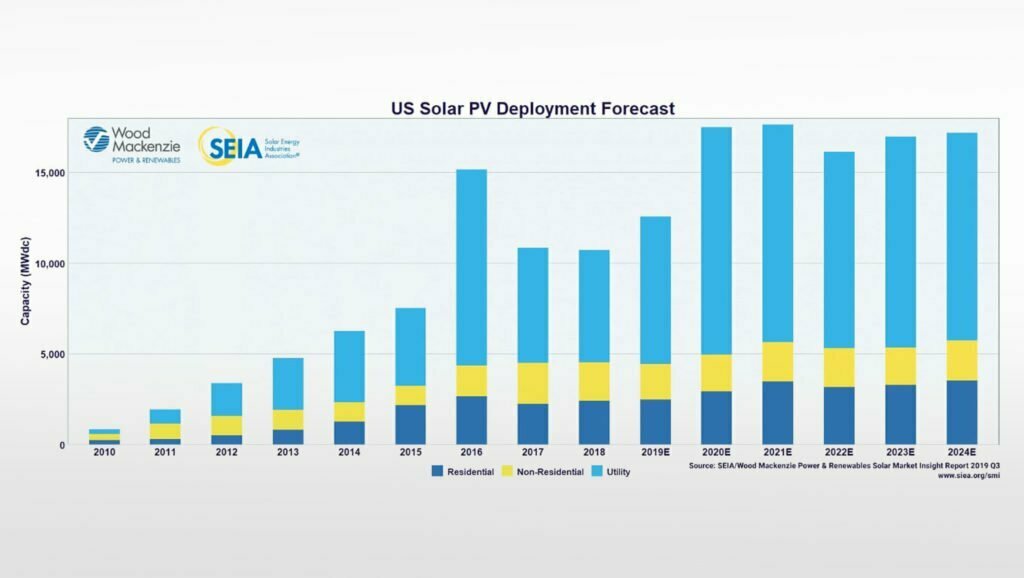As we look around, it becomes more evident that the concept of the future is somewhat relative nowadays. The explanation for this idea is that the future we used to imagine a few years ago is no longer a future but a reality. Modern technologies are developing and expanding their capacities at an incredible pace. All we can do is accelerate the rhythm of our life, not to stay behind this all and get the most out of contemporary solutions.
The Future Of Solar Panels
The only way to keep up with the times is to overcome the fear of new changes in your life and not avoid the utilization of new technologies. These technologies are more efficient and sustainable. Yes, you are right! I’m speaking about solar panel system and solar panel kits. As time shows, the solar industry expands its range due to the growing demand for solar energy consumption. Based on this very demand, it is permanently improving its quality and possibilities.
As the solar panel history timeline shows, this industrial field has made an incredible leap forward during the last 50 years. If we skip the initial stages of solar panel development efforts and discoveries, we came to 1954 when the actual photovoltaic cell was invented. The credit for this discovery goes to Calvin Fuller, Gerald Pearson and David Chapin. Due to these three scientists it was possible to create a device which could convert the sunlight into power. As compared to modern PV cells with about 20 percent solar panel efficiency, these primary models operated with only 4 percent efficiency. In only half a century, this sphere demonstrated such incredible achievements that above residential/commercial installations, EV charging, hot water supply and smart house kit maintenance solar panel system became usable to power outer space.
The ordinary human mind can’t even imagine how perspective this field is. A vivid example of this theory is the new organic solar cell. The initial low-efficiency percentage is being improved by a group of researchers from the Institute of Materials for Electronics and Energy Technology. Scientists from Energy Campus Nűrnberg (EnCN) have recently worked hard to develop organic cells’ efficiency and exceed its percentage above the normal PV system cell.
The organic solar cells are thinner and more flexible, giving the opportunity to apply them to various surfaces. This feature enhances the utilization of organic cells in most incredible residential areas, such as windows. Yes, you are right! A window coated with organic solar cells can screen out the thermal radiation and absorb and convert it into power. Although the organic solar cells have much to improve to function with absolute benefit for the consumer the very idea proves the inevitable permanent development of solar panel kits.
Solar Cells
There are about three dozen solar cell types, each having its pros and cons. The main difference is based on the solar panel efficiency, which influences the solar panel cost. As I already mentioned about organic solar cells, below I’ll bring a few more examples of the bestsellers in solar energy markets. The top opens the polycrystalline solar panel, one of the most frequently used types in PV system manufacturing. The next is its brother – monocrystalline solar panel. This type is a bit more expensive than poly due to the time-consuming, complicated manufacturing process and more efficiency. That’s why many customers prefer to pay more but gain the full out of it. There are also thin-film and wafer solar cells, hybrid solar cells, nanocrystal and photoelectrochemical cells, etc. Each of these types has its specific features and characteristics, also their benefits and disadvantages. To choose the most suitable for your consumption, you should consult a specialist.
The Future Of Solar Industry In The US
The US is known as one of the countries with highest demand of solar panel installation. All over the country solar industry is growing with a record pace due to millions of consumers who decide to go solar to benefit their budget. By Autumn 2019 the US solar panel companies had performed about 2 million solar system installations with a solar capacity of 71,300 megawatts. In 2020 this number reached a total of 88.9 gigawatts with the capacity to power 14.6 million US residents. The Solar Energy Industries Association (SEIA) forecasts that solar panel installation will more than double in the upcoming five years, with 100 gigawatts only in 2021. This assumes the involvement of over 10,000 solar panel companies in installation processes in the US only.
If we look closely at these numbers, it’ll be more than evident that solar PV energy will grow fastest from now by 2050.
Top Solar States Of The US
So, which are the most suitable states for solar system maintenance? Below is a list of the US states that best comply with the PV system consumption.
California 21,074 megawatts
North Carolina 4,308 megawatts
Arizona 3,400 megawatts
Nevada 2,595 megawatts
New Jersey 2,390 megawatts
Massachusetts 2,011 megawatts
Texas 1,874 megawatts
Utah 1,599 megawatts
More Solar, Fewer Fossil Fuels
The sustainability of solar energy consumption is not a secret to anyone. Even children know that the power generated by the PV system is eco-friendly. Still some people don’t know the full package of benefits, including the positive impact on the environment. Our goal must be raising awareness among all the people so that the future stands for solar energy only. Do you know that each hour 430 quintillion Joules of energy hits the Earth from the Sun? Sure, you don’t! Oh, and here comes the most interesting! The total amount of energy used by the people annually is 410 quintillion Joules. Now compare these two numbers, and you’ll be astonished by the vast amount of energy potential that we humans fail to utilize. Imagine what a paradise it will be to use the natural resource of energy and deny the production and output of carbon dioxide and fossil fuels.
The future generations will, no doubt, be grateful to us for our input in a better lifestyle. In conclusion, just a reminder that today is the tomorrow you were looking for yesterday.
Author of the article: Helen Kocharyan







